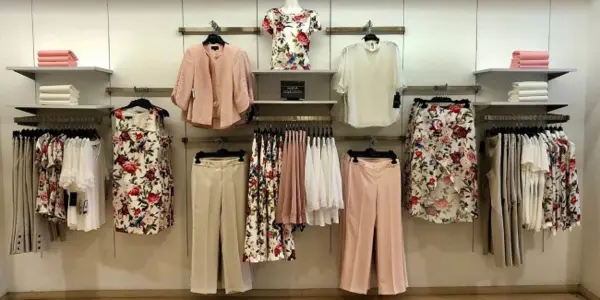Stay ahead with the latest Garment Buying House Trends in 2024. Expert insights and analysis to guide your sourcing strategies.

In the ever-evolving landscape of the fashion industry, garment buying houses play a pivotal role in bridging the gap between fashion brands and manufacturers.
As we step into 2024, the dynamics of garment buying houses are undergoing significant transformations, driven by technological advancements, sustainability imperatives, and shifting consumer preferences. In this blog post, we delve into the emerging trends reshaping the garment buying house sector in 2024 and beyond.
Technological Integration; Garment Buying House Trends in 2024
In 2024, technological integration continues to revolutionize the operations of garment buying houses. Automation, artificial intelligence, and data analytics are becoming indispensable tools for streamlining processes, enhancing efficiency, and optimizing decision-making.
Advanced software solutions facilitate order management, supply chain visibility, and inventory tracking, empowering buying houses to respond swiftly to market demands and ensure seamless coordination between stakeholders.
Moreover, virtual sampling and 3D prototyping technologies are gaining traction, enabling buying houses to reduce lead times, minimize physical sampling, and accelerate product development cycles. By leveraging virtual reality (VR) and augmented reality (AR) solutions, buying houses can provide immersive experiences to clients, allowing them to visualize designs in real-time and make informed decisions remotely.
Sustainable Sourcing Practices
In an era marked by heightened environmental consciousness, sustainable sourcing practices have emerged as a cornerstone of garment buying house operations. In 2024, buyers and brands are increasingly prioritizing ethical and eco-friendly manufacturing processes, prompting buying houses to adopt sustainable sourcing strategies.
From organic fabrics and recycled materials to fair trade certifications and waste reduction initiatives, garment buying houses are aligning their sourcing practices with sustainability goals. Collaboration with certified factories, compliance with stringent environmental standards, and transparent supply chain management are integral components of sustainable sourcing frameworks embraced by progressive buying houses.
By promoting sustainable alternatives, investing in eco-conscious technologies, and advocating for responsible production practices, garment buying houses are not only meeting the demands of socially-conscious consumers but also contributing to a greener, more sustainable future for the fashion industry.
Digital Transformation and E-Commerce:
The proliferation of e-commerce channels and digital platforms has ushered in a new era of opportunities and challenges for garment buying houses. In 2024, digital transformation is reshaping the way buying houses engage with clients, market products, and conduct transactions.
Online marketplaces, B2B platforms, and virtual showrooms are becoming integral components of the buying house ecosystem, facilitating seamless communication, collaboration, and commerce between buyers and suppliers. Through intuitive digital interfaces and mobile-friendly applications, buying houses can showcase product catalogs, negotiate deals, and manage orders with greater convenience and efficiency.
Furthermore, the rise of direct-to-consumer (DTC) models and influencer marketing is prompting buying houses to explore new avenues for brand promotion and customer acquisition. By harnessing the power of social media, content marketing, and digital advertising, buying houses can expand their reach, build brand awareness, and cultivate loyal customer communities in the online sphere.
Supply Chain Resilience and Risk Management
The global disruptions caused by the COVID-19 pandemic have underscored the importance of supply chain resilience and risk management in the garment industry. In 2024, buying houses are investing in robust supply chain infrastructure, diversifying sourcing networks, and implementing contingency plans to mitigate unforeseen risks and disruptions.
From geopolitical tensions and trade uncertainties to natural disasters and logistics challenges, buying houses are proactively assessing potential threats and devising strategies to ensure continuity of operations. Collaborative partnerships with reliable suppliers, agile production models, and digital supply chain monitoring tools are instrumental in enhancing the resilience of buying house operations amidst turbulent times.
Moreover, the adoption of blockchain technology for supply chain traceability and transparency is gaining momentum, enabling buying houses to verify product origins, track manufacturing processes, and authenticate product authenticity. By leveraging blockchain-powered solutions, buying houses can instill trust, integrity, and accountability across the supply chain, thereby enhancing brand reputation and consumer confidence.
Conclusion
As we navigate the complexities of the fashion industry landscape in 2024, garment buying houses are poised to embrace innovation, sustainability, and resilience as guiding principles for future growth and success.
By harnessing the power of technology, embracing sustainable practices, embracing digital transformation, and prioritizing supply chain resilience, buying houses can position themselves as indispensable partners in the dynamic world of fashion commerce. As the journey unfolds, the evolution of garment buying houses will continue to shape the future of fashion, driving progress, and prosperity in the years to come.
Posts Tag:
Garment buying house trends in 2024 usa, Textile gazette 2024 bangladesh, Trends in apparel industry, Future fashion trends 2024, 2024 fashion trends streetwear, Future of apparel, Opportunities in apparel industry

You must be logged in to post a comment.